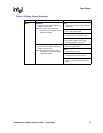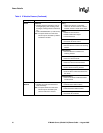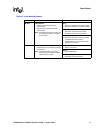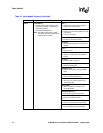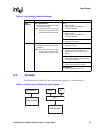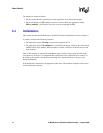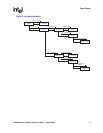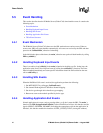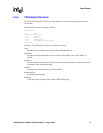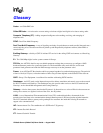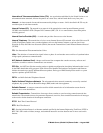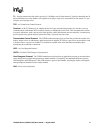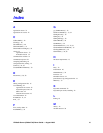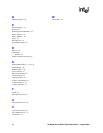
46 IP Media Server (Global Call) Demo Guide — August 2005
International Telecommunications Union (ITU): An organization established by the United Nations to set
telecommunications standards, allocate frequencies to various uses, and hold trade shows every four years.
Internet: An inter-network of networks interconnected by bridges or routers. LANs described in H.323 may be
considered part of such inter-networks.
Internet Protocol (IP): The network layer protocol of the transmission control protocol/Internet protocol
(TCP/IP) suite. Defined in STD 5, Request for Comments (RFC) 791. It is a connectionless, best-effort packet
switching protocol.
Internet Service Provider (ISP): A vendor who provides direct access to the Internet.
Internet Telephony: The transmission of voice over an Internet Protocol (IP) network. Also called Voice over IP
(VoIP), IP telephony enables users to make telephone calls over the Internet, intranets, or private Local Area
Networks (LANs) and Wide Area Networks (WANs) that use the Transmission Control Protocol/Internet Protocol
(TCP/IP).
ITU: See International Telecommunications Union.
Jitter: The deviation of a transmission signal in time or phase. It can introduce errors and loss of synchronization
in high-speed synchronous communications.
NIC (Network Interface Card): Adapter card inserted into computer that contains necessary software and
electronics to enable a station to communicate over network.
PCD file: An ASCII text file that contains product or platform configuration description information that is used
by the DM3 downloader utility program. Each of these files identifies the hardware configuration and firmware
modules that make up a specific hardware/firmware product. Each type of DM3-based product used in a system
requires a product-specific PCD file.
PSTN: see Public Switched Telephone Network
Public Switched Telephone Network: The telecommunications network commonly accessed by standard
telephones, key systems, Private Branch Exchange (PBX) trunks and data equipment.
Reliable Channel: A transport connection used for reliable transmission of an information stream from its
source to one or more destinations.
Reliable Transmission: Transmission of messages from a sender to a receiver using connection-mode data
transmission. The transmission service guarantees sequenced, error-free, flow-controlled transmission of messages
to the receiver for the duration of the transport connection.
RTCP: Real Time Control Protocol
RTP: Real Time Protocol
SIP: Session Initiation Protocol: an Internet standard specified by the Internet Engineering Task Force (IETF) in
RFC 3261. SIP is used to initiate, manage, and terminate interactive sessions between one or more users on the
Internet.



